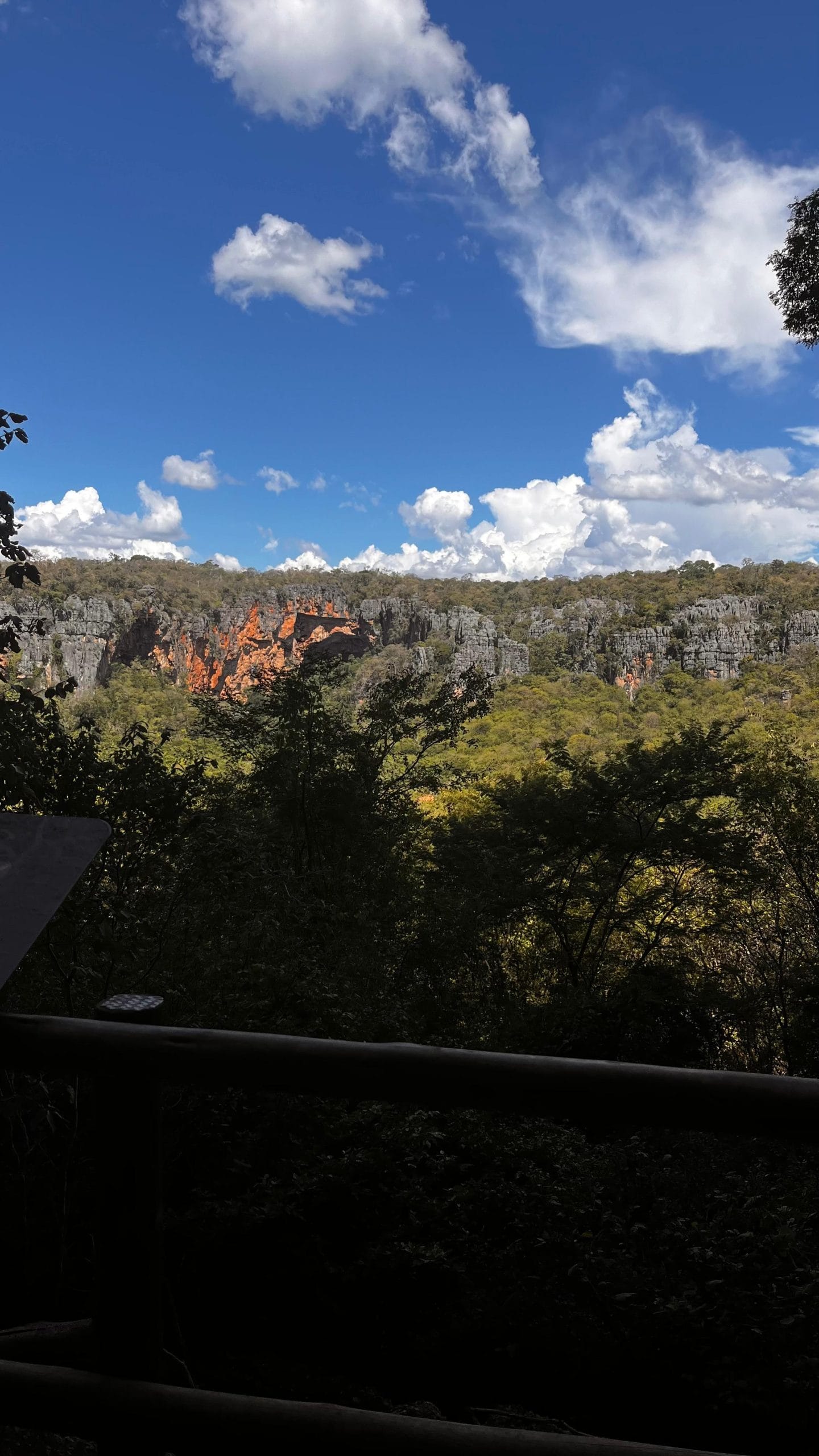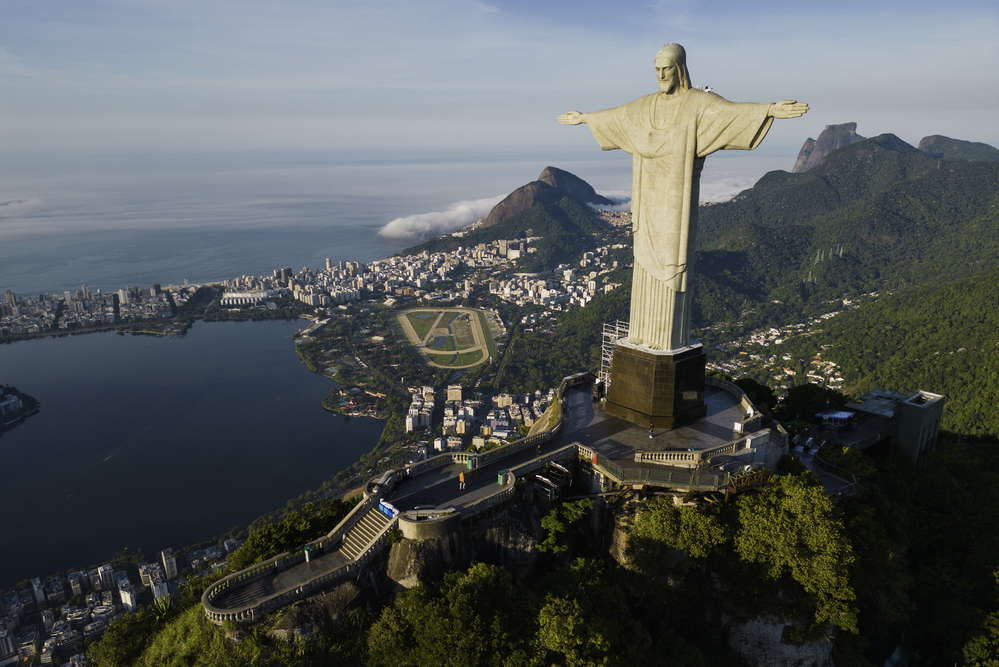Visiting national parks has become one of the most intense ways to connect with nature. The variety of Brazilian national parks is huge, but today I’m going to share with you everything about the Peruaçu Caves National Park.
I had the privilege of visiting the Peruaçu Caves this year, in April 2025, and I was simply enchanted by the beauty of the natural landscapes, the history behind every detail, and the culture that surrounds the entire area of dense forest full of wild animals.
Adventure is always wonderful, but beyond that, there are other feelings that surface when we explore places unknown to our eyes. If you’re looking for more than just adventure, the Peruaçu Caves have everything to make you add it to your travel list as your next destination!
Peruaçu Caves National Park
The Peruaçu Caves National Park is located in the northern region of Minas Gerais, in the municipalities of Januária, Itacarambi, and São João das Missões. It covers approximately 56,448 hectares, and its conservation unit was created in 1999, but it was only opened to the public in 2016.

In addition to tourism, the park is a site for geological research (formation and evolution of rocks), archaeological research (history and culture of past civilizations), ecological research (interaction between living beings and the environment), and landscape research (analysis of natural landscapes and how they are perceived and used by people).
The park is famous for its conservation area, which holds more than 180 gigantic caves, and through some of these caves runs the Peruaçu River—hence the park’s name “Peruaçu Caves.” The Janelão Grotto and André’s Arch are among the largest caves and are also part of the park’s main postcard scenery.
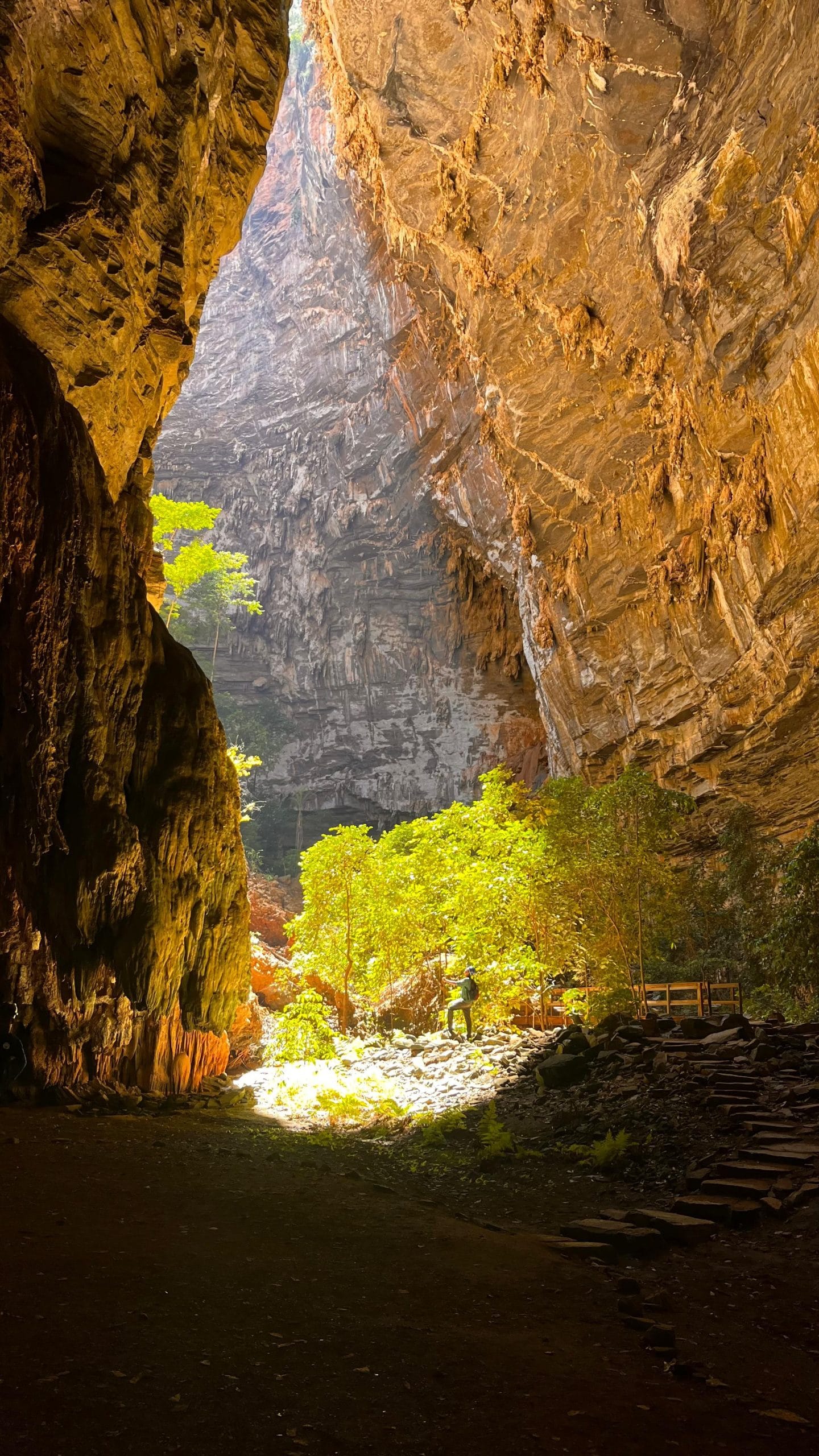
This year, on July 13, 2025, the park was recognized as a Natural World Heritage Site by the United Nations Educational, Scientific and Cultural Organization (UNESCO). This is an extremely important recognition for the region, bringing greater visibility to the park around the world.
Recently, the park has been equipped to welcome tourists. A total of eight caves are open for visitation, with excellent infrastructure including trails, viewpoints, and protective walkways. Hiring a guide is mandatory to accompany and present information throughout the entire cave visitation route.
To ensure your experience is safe and unique, the park has a group of environmental guides trained and certified by ICMBio. It’s necessary to book in advance, as the park is always crowded. When I decided to visit the park, I got in touch a month before my trip, and since it coincided with a holiday, there was no availability for all the caves.
What to do in the park
The main attraction of the park is its gigantic caves. These are caves formed in colossal rock structures, with impressive dimensions and accompanied by rock art over 12,000 years old. Research indicates that these were records left behind by traces of human presence.
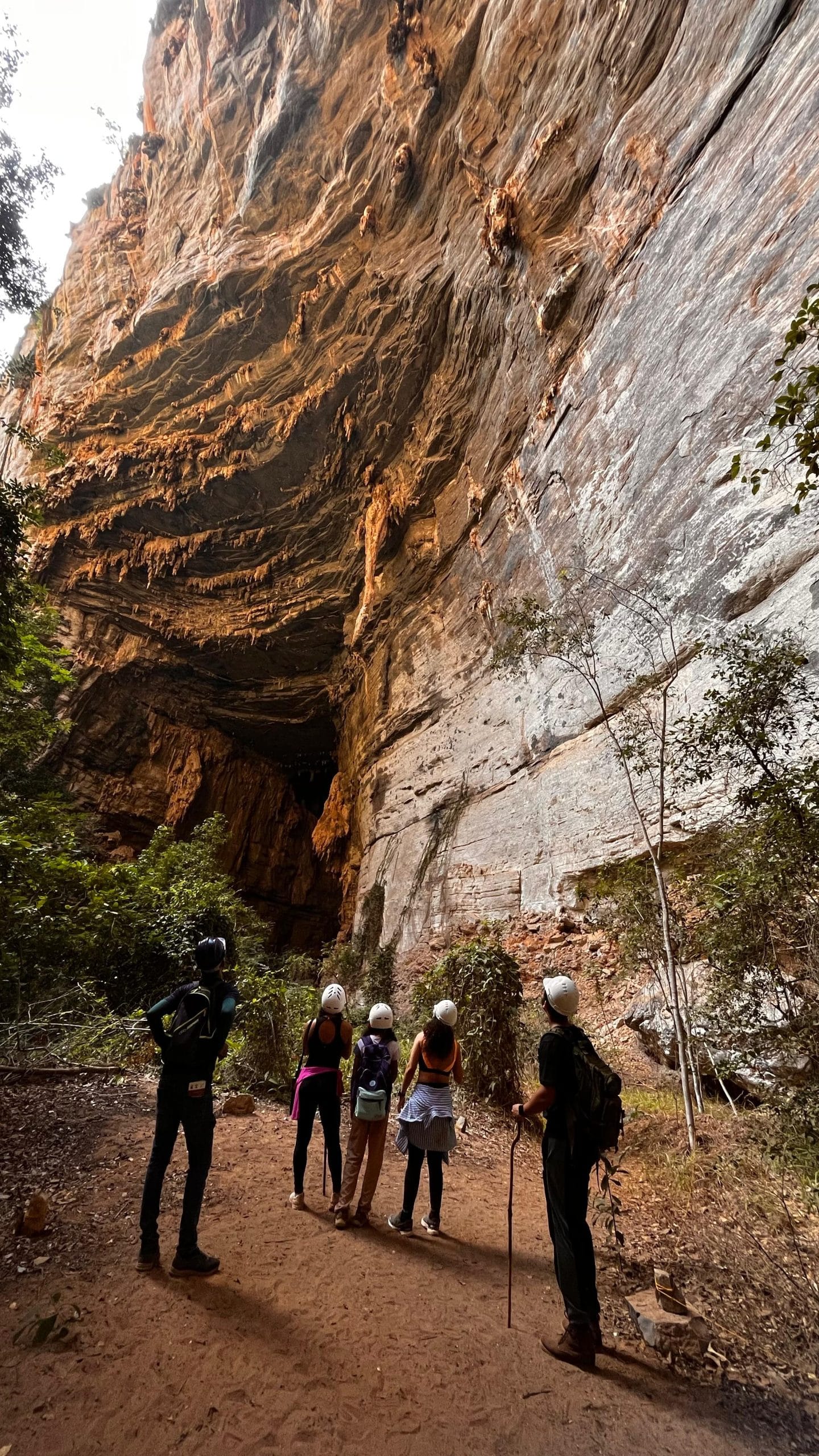
The Peruaçu Caves are, in themselves, incredible. Everything that is presented to us tourists is enough to make us feel energized by such beauty, and the stories of ancient cultures make us wonder: “How is it possible that so much has already happened here?”
However, for those who want more—just like I did—there’s a lot to do in the park beyond exploring all the caves open to visitation. During my visit, I asked our guide for information about other cultural attractions that are open to the public.
The guide mentioned that there are Indigenous villages that welcome tourists to share their stories. There are also handicrafts for sale and even the opportunity to create your own decorative item, which you can take home or give as a gift to someone special.
And finally, if you have some extra time, it’s worth visiting the cities near the park. The closest one is Itacarambi, located about 20 km from the park. It has around 17,000 inhabitants and lies on the left bank of the São Francisco River, 660 km from the capital, Belo Horizonte. It’s a small but charming town—its riverside promenade is a nice place for a stroll, the inns are cozy, and the homemade food is incredibly tasty.
Before reaching the park, there’s Januária, a historic city with over 65,000 inhabitants, also located on the left bank of the São Francisco River. It’s full of culture, artisan shops, bars all over the city—including along the riverfront. On top of all that, it’s known for its “Beach of Minas.” For three months each year, between July and September, the São Francisco River transforms, revealing a sandbank and a large beach structure.
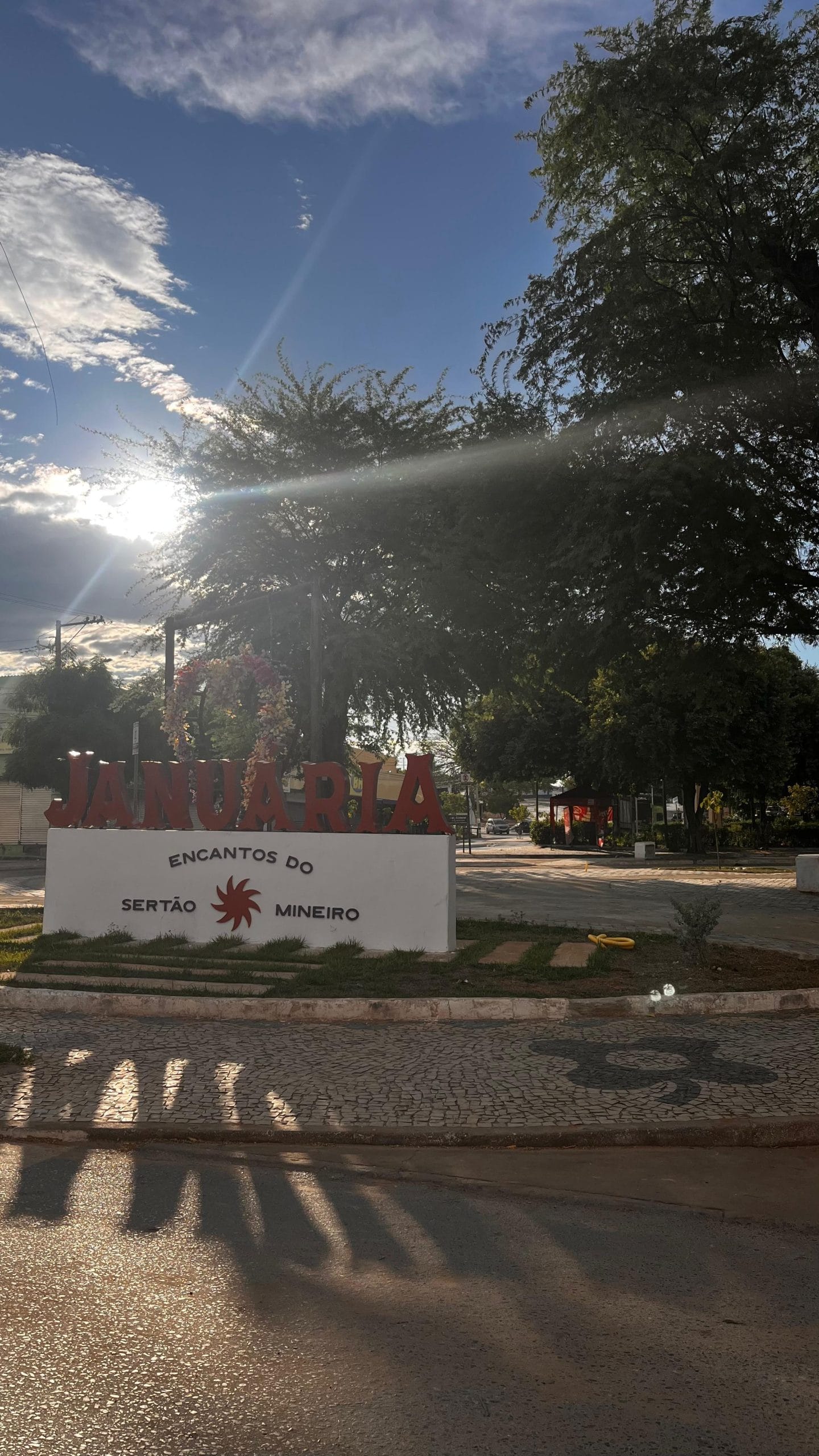
Peruaçu Caves
The Peruaçu Caves, with their gigantic rock formations, are the starting point for adventure. They are a site of immense importance for both Brazil and the world. I’m going to introduce you to all the caves currently open for visitation, detailing everything about each one so you can build an itinerary that fits the number of days you plan to spend in the park.
The information I’ll share about each cave was taken from the itinerary I received from the guide when I hired him to explore the park. It’s a very complete guide that you receive as soon as you get in touch with one of the guides. In addition to that, I’ll also add insights from my personal experience during the cave visits.
My itinerary was just one day long. I chose the Janelão Grotto and the Índio Grotto. Since it was my first time, I didn’t know how well my group would perform, so I followed the guide’s advice regarding the duration of each trail. But now, I understand the difficulty level and the strategy of choosing caves that share the same starting point.
The visitor centers are the departure points. The first is where we check in, and it has just one trail—the Lapa do Rezar. The second is the visitor center for the Janelão Grotto, which offers trails to Janelão itself, Índio Grotto, Bonita Grotto, Lapa do Boquête, Lapa dos Desenhos, and the Arco do André circuit. Finally, beyond the Janelão center, there are Lapa do Caboclo and Lapa do Carlúcio, but they do not yet have a visitor center.
Janelão Grotto: a journey into the heart of the park
The Janelão Grotto is the most impressive attraction in the park. It stands out for the enormous size of its cave, its vast chambers, and the gigantic rock formations inside. Right at the entrance, there’s a massive stone wall with ancient paintings that show people once lived in the Peruaçu Valley region. This grotto is also home to the largest stalactite in the world, known as the “Ballerina’s Leg.”
With its grand nature both in emotion and in scale it was the first cave I visited. With every step I took, I felt small amid so much natural wonder. The ancient rock paintings are not just beautiful, they spark a deep curiosity a curiosity driven by genuine interest: “How is this even possible? How did people live here?” NATURE! It gives you exactly what you need.
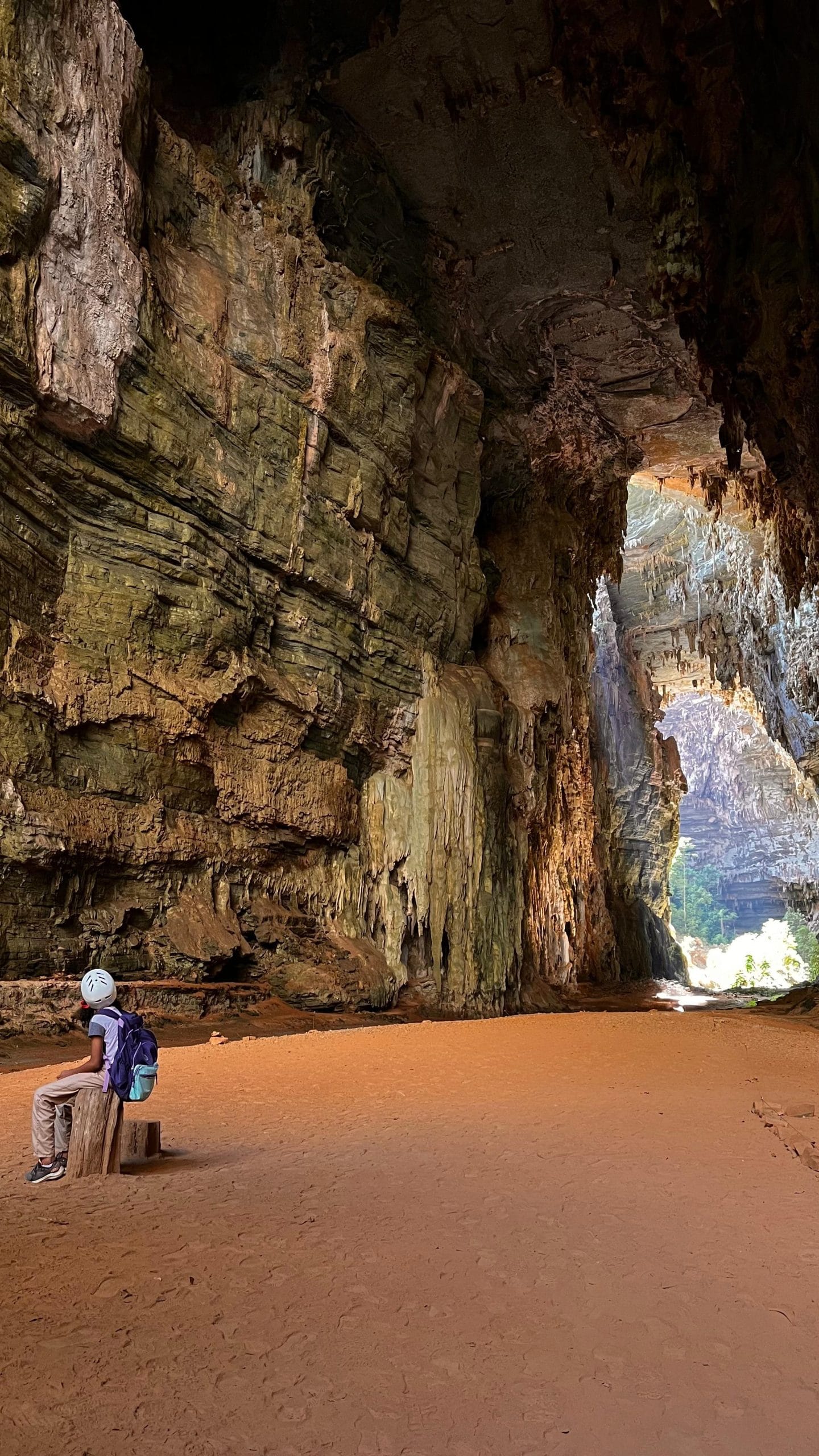
I can say with confidence: there’s no way to regret going. On the contrary, the feeling is so unique and indescribable that the plan now is to return and explore all the Peruaçu Caves. I took several photos and videos of this experience—it was an adventure that left me nearly speechless throughout the hike.
- Total distance: approximately 4.8 km (round trip)
- Estimated time: 5h30 (round trip)
- Difficulty level: Semi-strenuous
- Main attractions: cave, geological monuments, massive rock walls with cave paintings, archaeological sites, and scenic landscape observation.
The Janelão trail is well-structured along the entire route. The path is clean, with safe walkways, rope handrails, well-built stairs, and rest areas where you can have a snack or even a small picnic while listening to the sounds of birds, the river, the wind rustling through the greenery, and the guide filling us with knowledge.

The estimated time for all the caves will vary depending on the physical condition of the group. My group consisted of four adults aged 30 to 32 and one 12 year old child. We’re all physically active, and our average time to complete the trail was about 3 hours (round trip).
Indian Cave: an archaeological and natural treasure in brazil
The entire park is full of stories and breathtaking nature, but the Indian Cave has a special charm. If you want to witness this wonder, it’s a must-see stop at the Peruaçu Caves National Park. Nestled in a stunning landscape, this cave holds true treasures from prehistory.
On the way there, it feels like you’re climbing stairs to the sky. Right at the entrance, you’re greeted by entire panels of rock art drawings made by ancient peoples that are still preserved on the walls and even on the cave ceiling. Inside, the scenery remains impressive, with natural columns, stalactites, and stalagmites completing the view.
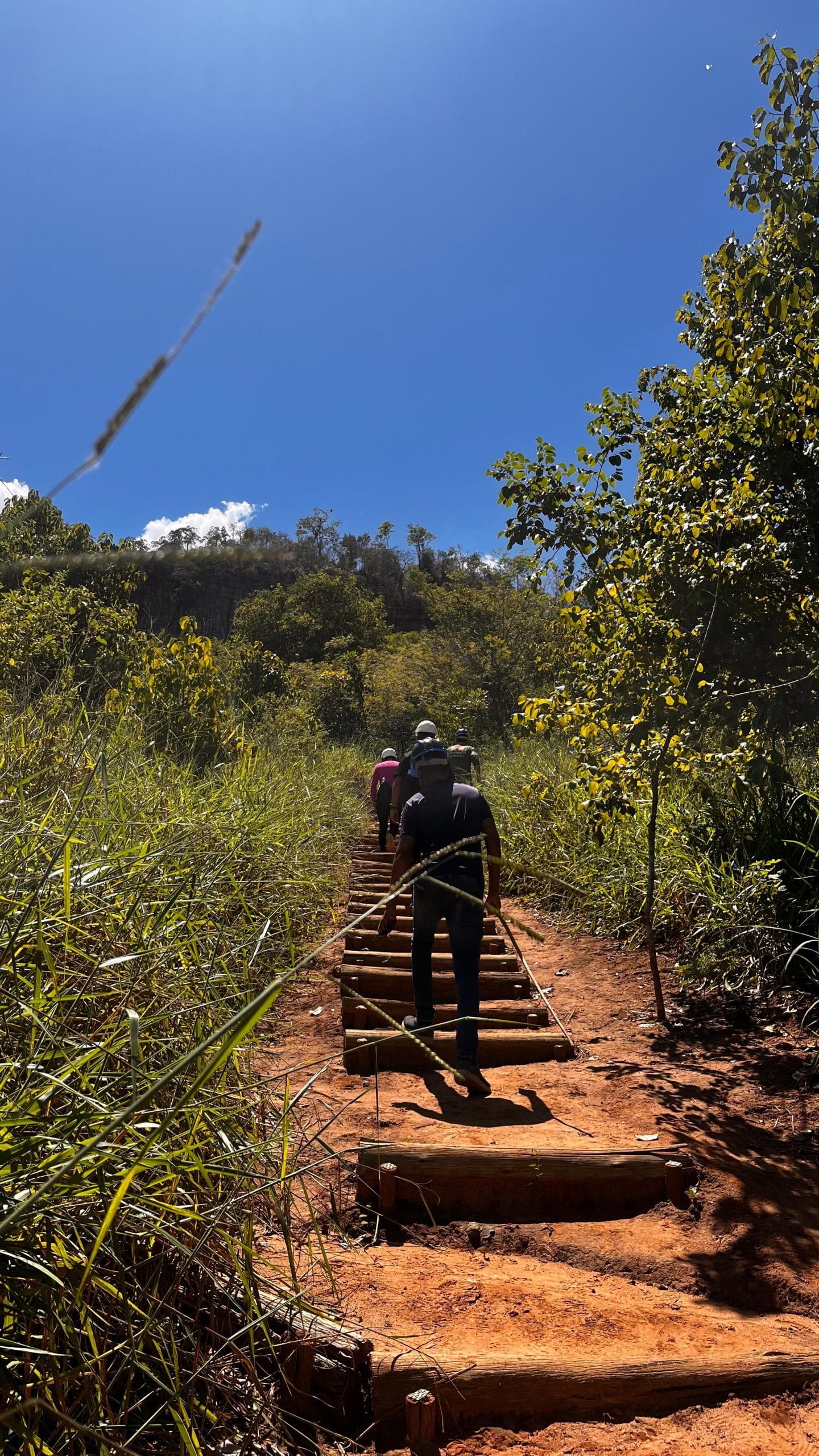
But the experience doesn’t end there. From the top of the Mirante do Índio (Indian Lookout), accessible from the cave, you can enjoy a panoramic view of the impressive entrance to the Gruta do Janelão and the Visitors Center area. It’s a perfect spot to take in nature and snap some amazing photos!
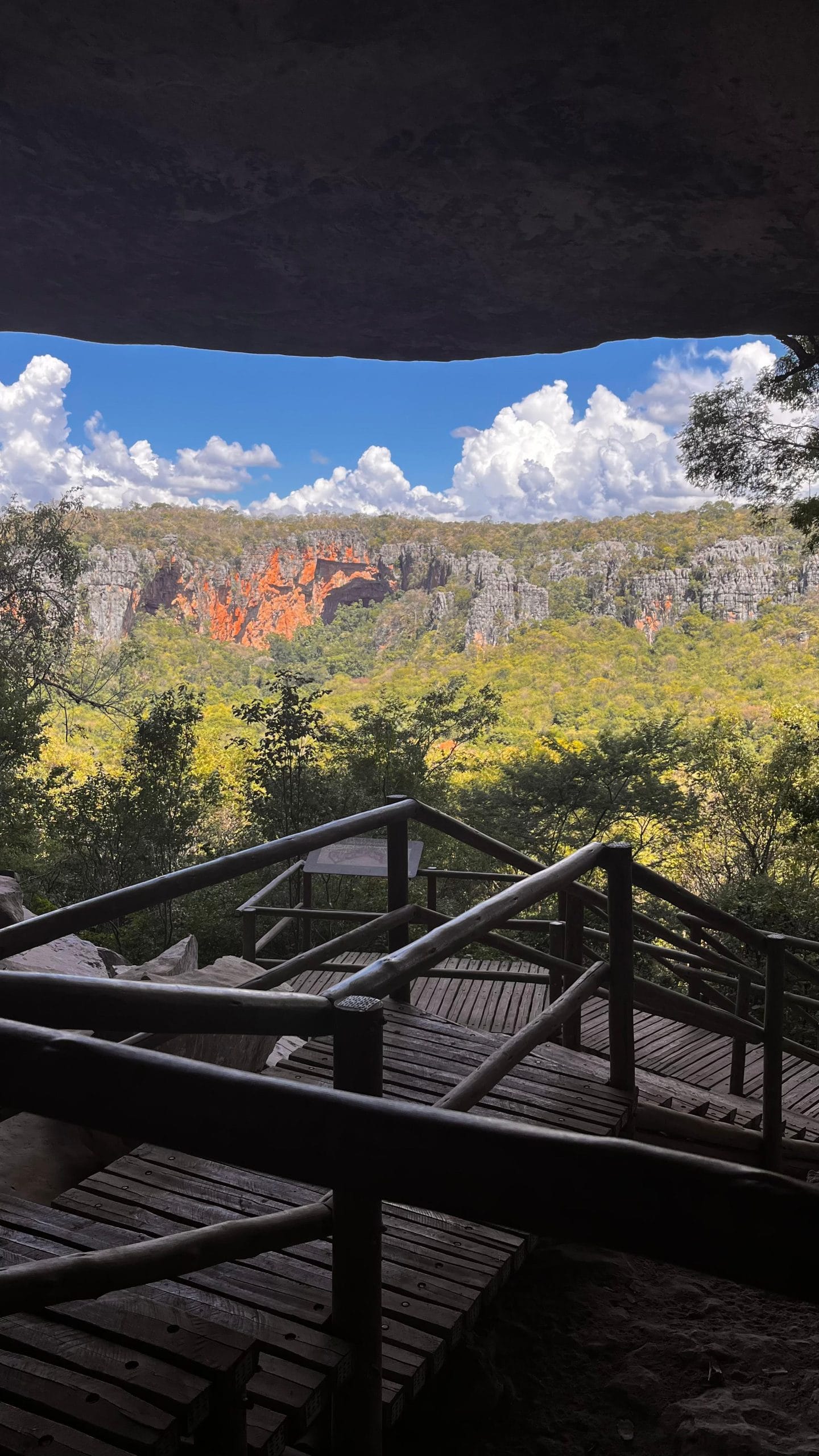
Today, through our eyes, this place offers a perfect panoramic view to appreciate and photograph nature. But back in the time of the native peoples, it was a strategic living point. From above, it was possible to have a complete view of the region, which made it easier to protect against invaders and helped in hunting animals for food.
- Total distance: approximately 1.5 km (round trip)
- Average duration: 2h20
- Difficulty level: Easy
- Main attractions: rock art at Lapa do Índio and the privileged view from the lookout
If you’re planning to explore Peruaçu, be sure to include the Gruta do Índio in your itinerary. It’s a unique combination of nature, history, and beauty that will definitely leave a mark on your trip. If you and your group are in good physical condition, it’s possible to include Gruta do Janelão, Gruta do Índio, and Gruta Bonita in a one-day itinerary.
Arco do André Trail
The Arco do André Trail offers a unique experience for those seeking adventure and a deep connection with nature. Along the way, you’ll find stunning viewpoints like the Mirante das Cinco Torres and the Mirante do Mundo Inteiro, as well as impressive caves such as Arco do André, Troncos, and Cascudos. In the latter two, the Peruaçu River flows through the caves, creating a spectacular scene with limestone rocks and emerald-green reflections in the water.
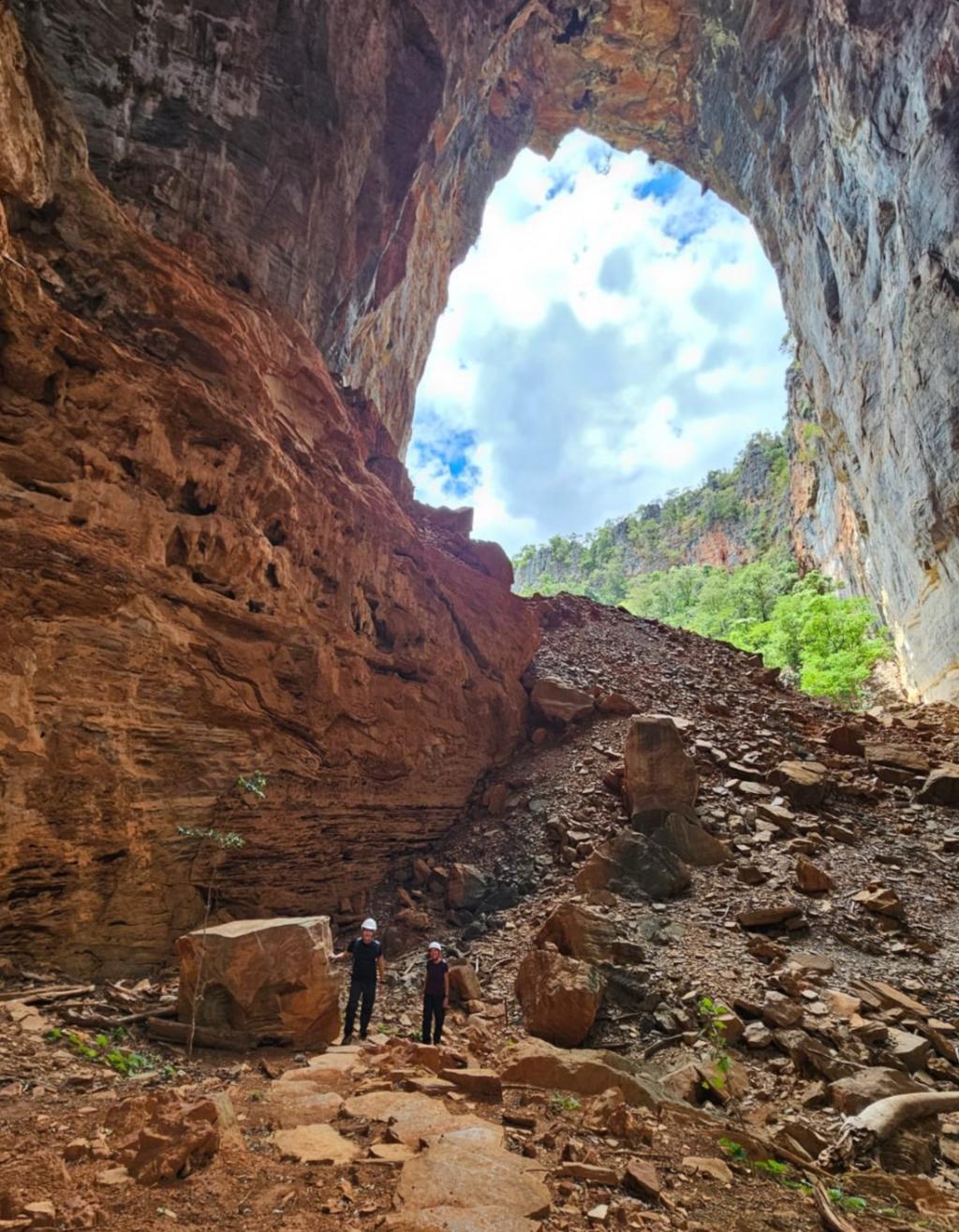
This route is geared toward the more adventurous. During the hike, visitors have the chance to explore the Cerrado and Caatinga biomes, observe karst rock formations, and learn about plants used for medicinal and nutritional purposes. You may also spot animals that are unique to this region many of which are endangered.
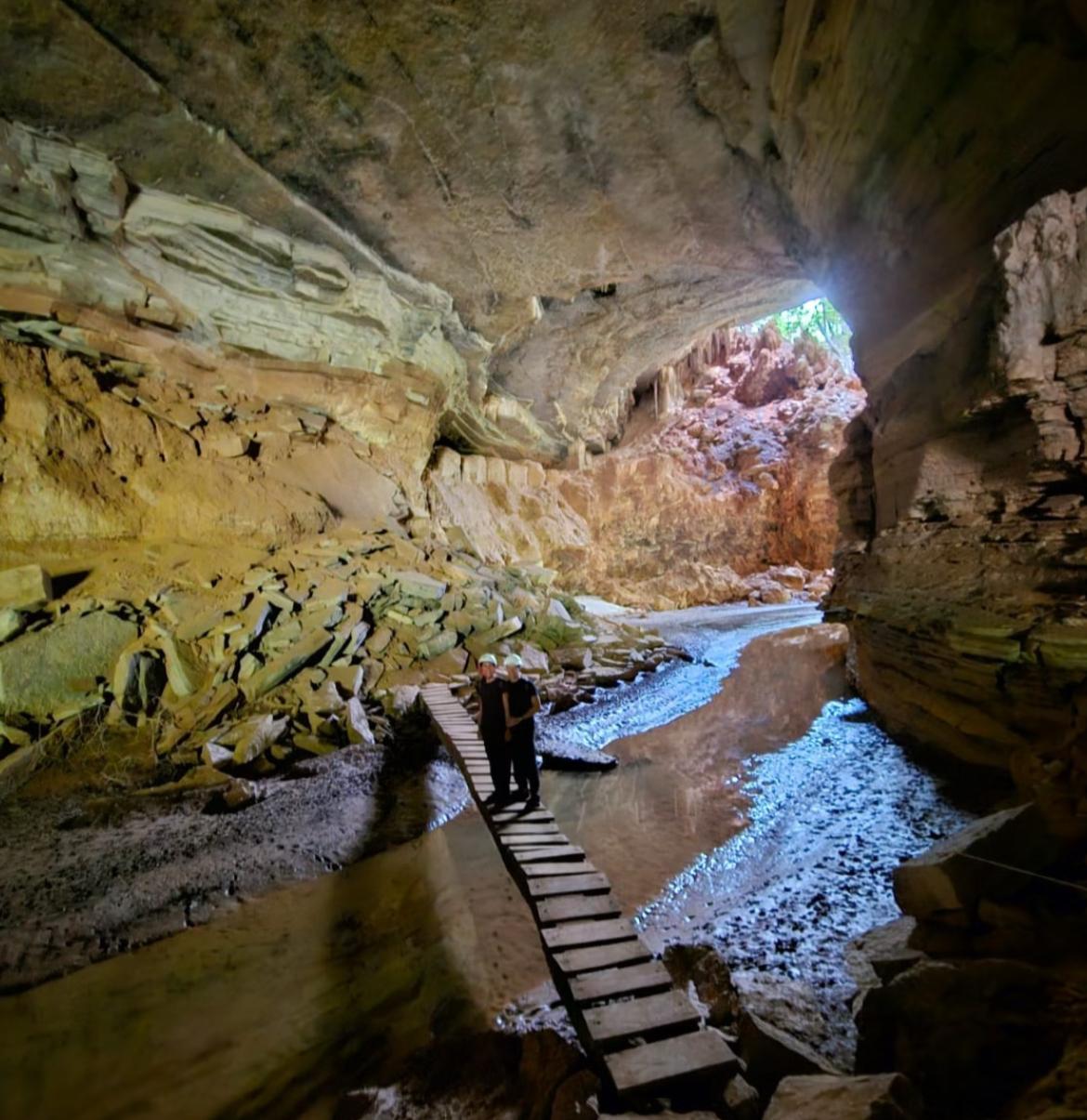
The trail includes steep ascents and descents, requiring good physical conditioning. It’s a hike with minimal human intervention, set in a rustic and natural environment. In some sections, you’ll need to navigate challenging terrain.
- Total distance: approximately 8 km (round trip)
- Estimated time: about 7 hours
- Difficulty level: moderate to difficult
- Main attractions: caves, geological formations, archaeological sites, and breathtaking landscapes.
Gruta Bonita: a subterranean treasure in Peruaçu National Park
Gruta Bonita lives up to its name and is, without a doubt, one of the most impressive caves in Peruaçu National Park. It’s the only completely dark cave in the region that’s open to visitors, offering a unique experience for those who enjoy exploring the underground world.
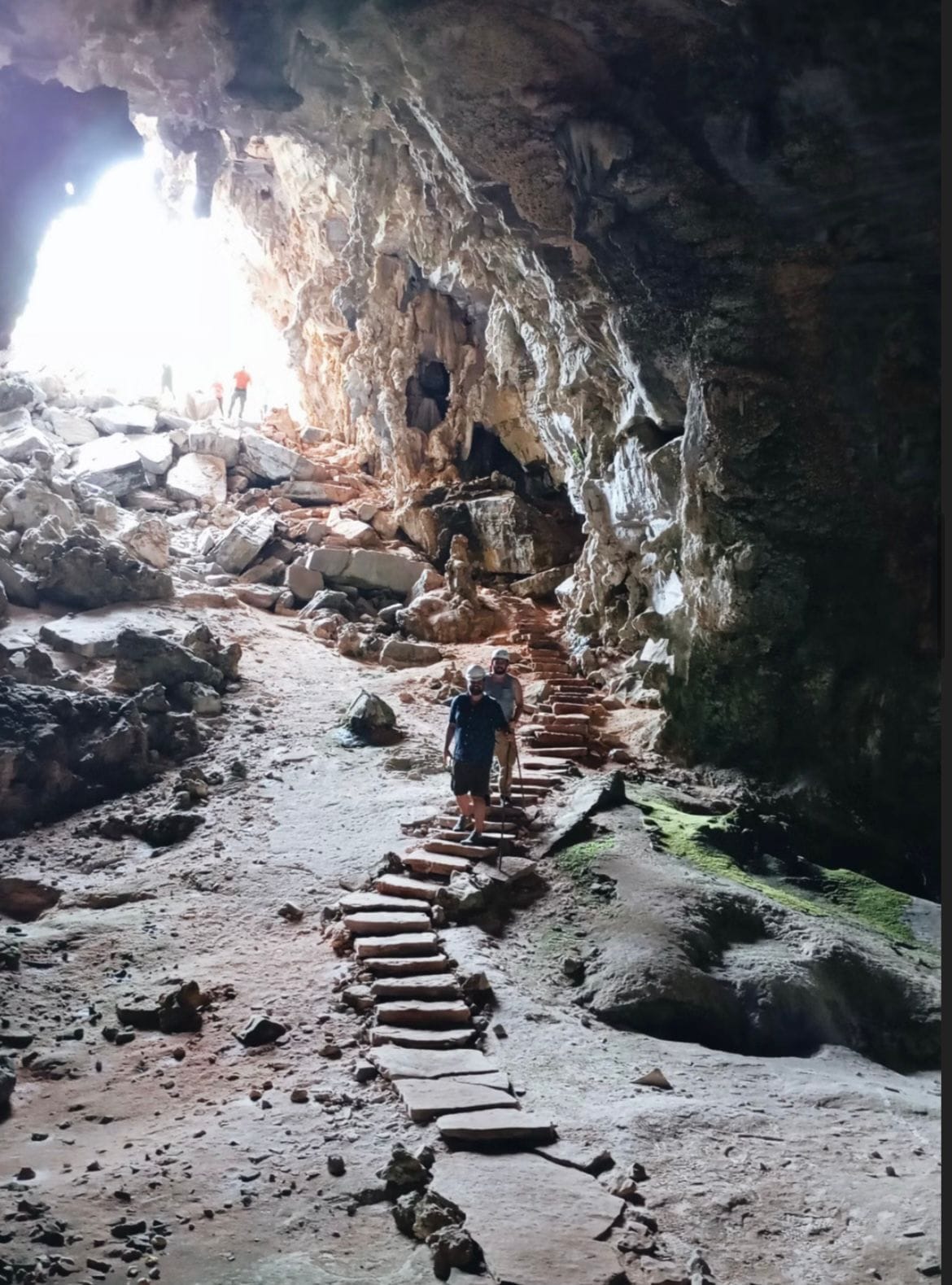
Along the trail, visitors walk through chambers and galleries filled with incredible rock formations known as speleothems. The variety of these formations is striking: stalactites, stalagmites, travertines, helictites (which twist in unusual directions), cave pearls, flowstones, and columns, among others. Many of these structures are delicate and fragile, forming true works of natural art.
One of the highlights of the visit is the Red Hall, a space covered in reddish sediments that create a striking visual unlike anything you’ve ever seen.
Gruta Bonita is perfect for those seeking adventure, beauty, and a connection with nature’s hidden wonders. Grab your flashlight, wear proper footwear, and get ready to be amazed by this natural spectacle that only Peruaçu Caves can offer!
- Total distance: approximately 1.5 km (round trip)
- Estimated time: 2h20 (round trip)
- Difficulty level: Easy
- Main attractions: Red Hall in Lapa Bonita and speleothems.
Lapa do Boquete: a dive into Peruaçu’s prehistoric history
Lapa do Boquete is one of the most important and extensively studied archaeological sites in Peruaçu Caves National Park. This location reveals traces of ancient civilizations that lived in the region thousands of years ago.
During the visit, you can see evidence of human burials and a rare example of a prehistoric silo a structure used by ancient peoples to store food, showcasing the level of organization and knowledge that already existed at that time.
Beyond its historical value, the landscape surrounding Lapa do Boquete is enchanting, making the tour a perfect blend of nature, culture, and archaeology.
- Total distance: approximately 1.2 km (round trip)
- Estimated time: 1h30 (round trip)
- Difficulty level: Easy
- Main attractions: rock shelters, cave paintings, archaeological excavations, and scenic views.
Lapa dos Desenhos: rock art amid nature
Lapa dos Desenhos is one of the most impressive spots in Peruaçu Caves National Park, especially for those fascinated by history and art. Right at the cave entrance, visitors are greeted by stunning panels of prehistoric rock art, preserved over thousands of years.
Thanks to the natural resources of the Peruaçu Valley, the region’s ancient inhabitants were able to produce different types of pigments and create paintings on high sections of the rock walls a true visual spectacle. What makes Lapa dos Desenhos even more special is the variety of styles and techniques found in the artwork, showcasing the rich cultural heritage of the peoples who once lived there.
The trail leading to the site follows the course of the Peruaçu Caves River, surrounded by lush gallery forest. Further along, the dense greenery gives way to the dry forest vegetation, revealing the park’s full natural diversity.
Total distance: approximately 2.6 km (round trip)
Estimated time: 2h20 (round trip)
Difficulty level: Easy
Main attractions: rock walls with cave paintings, gallery forest, and dry forest.
Gruta do Rezar: art, nature, and overcoming challenges in the heart of Peruaçu
Gruta do Rezar is one of the most remarkable experiences in Peruaçu Caves National Park. Right at the entrance, a natural skylight impresses as sunlight illuminates the inner forest, creating a breathtaking visual.

This cave combines the visual impact of the Peruaçu Caves River canyon with the historical richness of prehistoric rock art. Inside, you’ll find well-preserved paintings and engravings that reveal details of human presence in the region thousands of years ago.
One of the highlights is the massive entrance hall of the cave, about 90 meters wide and over 40 meters high. Additionally, the interior features an impressive variety of speleothems natural rock formations that make the scenery even more fascinating.
The trail to the cave is one of the most challenging in the park, with over 500 steps. But don’t worry the effort is worth it. The view, the grandeur of the place, and the immersion in history make this adventure one of the most rewarding in Peruaçu.
- Total distance: approximately 2.4 km (round trip)
- Estimated time: 3h30 (round trip)
- Difficulty level: strenuous
- Main attractions: regional history, dry forest, gallery forest, archaeological site, rock walls with cave paintings, dark cave, and speleothems.
Gruta do Caboclo: a unique style of rock art found nowhere else
Gruta do Caboclo is one of the archaeological treasures of Peruaçu caves National Park. The main highlight is the rock wall filled with cave paintings, with a high concentration of figures created in the so called Caboclo style.
This style is exclusive to the Peruaçu Valley and was first identified in this very cave, making the visit even more special for those interested in history and ancient cultures.
Beyond its archaeological value, the surrounding scenery is stunning, turning the tour into a true immersion in nature and the past.
- Distance: 450 m (round trip)
- Estimated time: 1h20 (round trip)
- Difficulty level: moderate
- Main attractions: regional history, rock walls with cave paintings, and cave.
Gruta do Carlúcio: nature, lookouts, and rock formations
The trail to Gruta do Carlúcio is a great opportunity to closely observe the beauty and diversity of the dry forest biome. Along the way, visitors encounter natural lookouts that reveal different landscapes throughout the seasons, with highlights including cacti and vegetation typical of rocky areas.
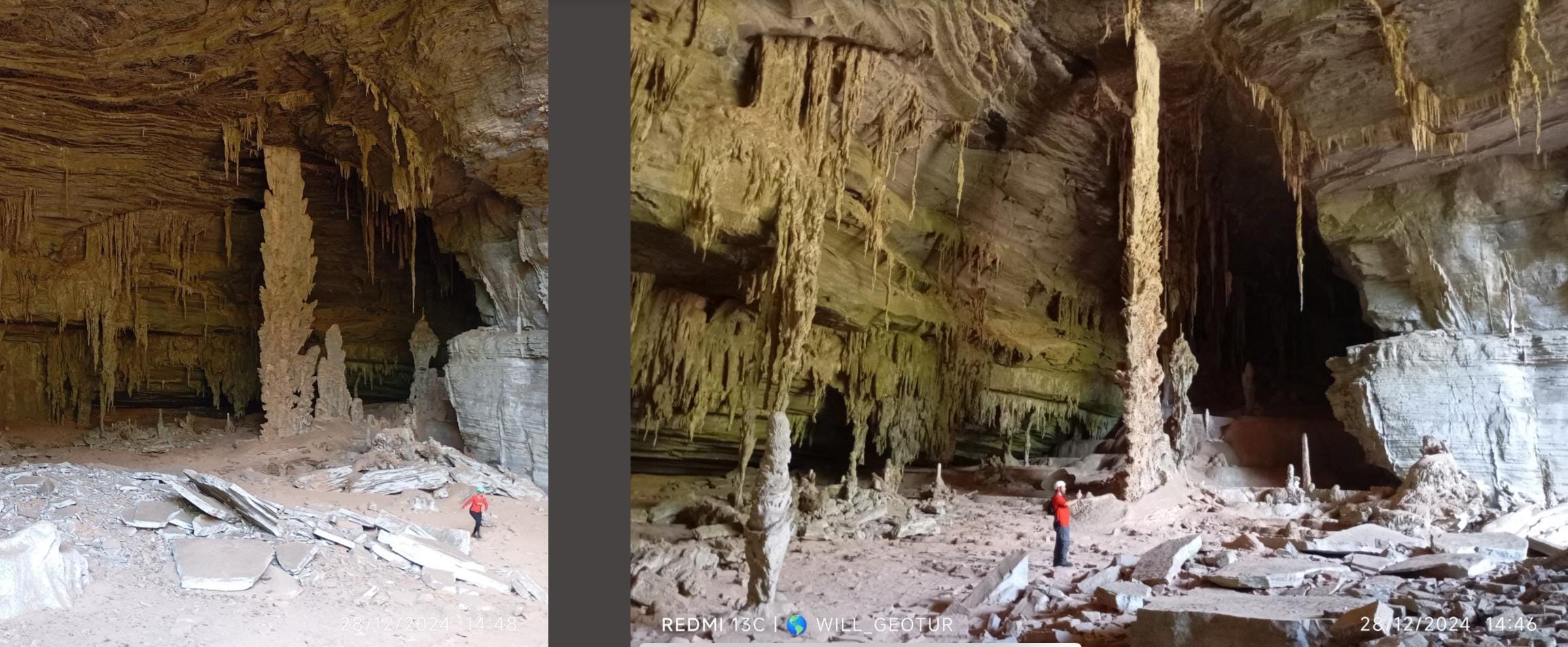
The route begins in a gallery forest, following a shaded and pleasant trail to the cave entrance. As you approach, you’ll see massive stone blocks that fell from the cave’s ancient ceiling, creating an impressive and geologically rich setting.
It’s an easy hike, full of contrasts and perfect for those wanting to explore the wilder and quieter side of Peruaçu National Park.
- Distance: 2.2 km (round trip)
- Estimated time: 2h30 (round trip)
- Difficulty level: moderate
- Main attractions: regional history and cave.
Tour Guide Information
On the ICMBio website, you’ll find a list of certified and trained guides ready to offer you the best possible experience. Make sure the list is up to date before choosing your guide, and once you’ve made your selection, look for additional information on social media.
Each cave has a different group size limit, so you can form your own group, giving you the freedom to include people with a similar level of physical fitness. Alternatively, you can join others that the guide has already scheduled.
Guide fees follow a standard rate and vary depending on the cave, but it’s possible to negotiate based on the number of caves included in your itinerary.
Where to Stay
If you choose Januária as your base city, you’ll find a wide variety of accommodations to explore the region. There are several hotels and guesthouses listed on Booking and Tripadvisor.
In Itacarambi, hotels and guesthouses are more limited, but there are still a few options available. It’s located a bit closer to the park, and you can also find some lodging options on Tripadvisor.
How to Get There
By plane
The closest major airports are Brasília International Airport (Federal District) and Confins International Airport in Belo Horizonte (Minas Gerais). Both receive frequent domestic and international flights. From these cities, the rest of the journey to the park can be done by car or via connecting flights to smaller regional airports.
By regional airport
The nearest airport to the Peruaçu Caves National Park is located in the city of Montes Claros (MG), which receives daily flights from Belo Horizonte and other Brazilian capitals. From Montes Claros, the trip to the base city of Januária can be made by car or bus, taking approximately 3.5 to 4 hours (about 210 km). This is the most practical route for those looking to reduce travel time by land.
By road
Land access is possible from several cities. The main gateway to the park is the city of Januária, located about 45 km from the park entrance.
From Belo Horizonte, the trip to Januária takes about 10 to 12 hours (approximately 670 km), via highways BR – 135, BR – 251, and MG – 402. Those departing from Brasília will travel around 700 km, with an average time of 9 to 11 hours, passing through Unaí and Arinos.
Most of the route is on paved roads, with only a small portion inside the park consisting of dirt roads. A small car can handle the trip just fine, but vehicles with higher ground clearance or traction can enhance the experience.
When to Visit
If you’re planning to explore Peruaçu Caves National Park, one of the natural gems of northern Minas Gerais, it’s important to know the visiting hours and what to expect from the weather throughout the year.
Opening Hours
The park is open from Tuesday to Sunday, from 8 a.m. to 6 p.m. However, access to trails and attractions is only allowed until 2 p.m.
An exception is the Arco do André trail, which requires more time and physical effort entry is only permitted until 12 p.m.
Keep this in mind to enjoy your visit safely and without rush.
Best Time to Visit
The park can be visited year-round, but each season offers a different experience:
- November to April is the rainy season. The vegetation becomes greener and more vibrant, creating a stunning landscape for those seeking lush natural scenery. However, on some days, trail access may be restricted due to rain.
April was exactly the month I visited, and the weather was perfect. No rain, mild temperatures, and the trail was pleasantly cool thanks to the dense vegetation. Inside the caves, it’s even fresher, with little sunlight and excellent humidity for hiking.
- May to October is the dry season. The weather is more stable, with fewer chances of rain, making it easier to take longer hikes and access certain areas. On the other hand, the vegetation loses its leaves and the landscape becomes more arid, with grayish tones dominating.
Weather and Safety
Throughout the year, temperatures in the region tend to be high, often exceeding 104°F (40°C). During the dry season, humidity drops significantly, and forest fires are common, which can limit access to certain areas of the park.
That’s why it’s essential to bring plenty of water, wear light and comfortable clothing, sunscreen, a hat, and of course, proper footwear for hiking.
Extra Tip
- If you want to see the park at its greenest and most vibrant, visit between December and March.
- If you prefer dry trails and consistently blue skies, June to September is ideal.
Regardless of the season, Peruaçu Caves National Park offers a one of a kind experience for nature lovers, history buffs, and adventure seekers. Add this destination to your travel plans and enjoy unforgettable moments in one of Brazil’s most incredible places! In fact, our guide shared a story about hiking during a rainstorm his group was at Gruta do Índio when it started to rain, and he said it was one of the most beautiful sights they had ever seen.
Where to Eat
You won’t be short on options for homemade, traditional Minas Gerais cuisine. The guide you choose will have a list of places with unique flavors to recommend. My group had the privilege of having lunch at a simple and cozy restaurant in Fabião, surrounded by dense forest a perfect setting for one of the most beloved dishes in Minas: free-range chicken, served with rice, salad, bean farofa with pork cracklings, pirão, and a dessert of dulce de leche.
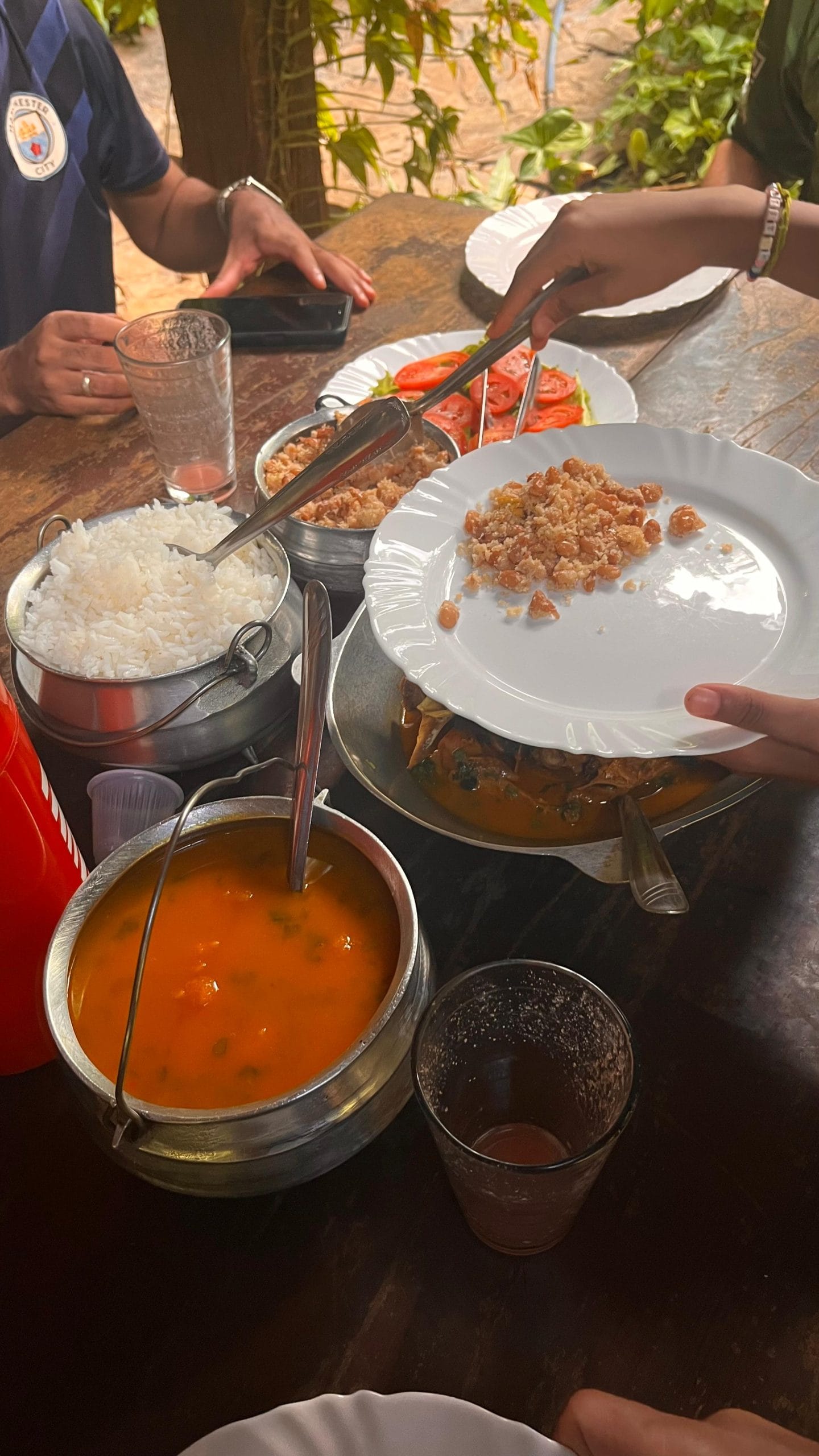
Conclusion
Visiting Peruaçu Caves National Park is a truly unique experience. Between breathtaking canyons, monumental caves, and ancient rock art, the park reveals a side of Brazil that’s still little known but absolutely fascinating.
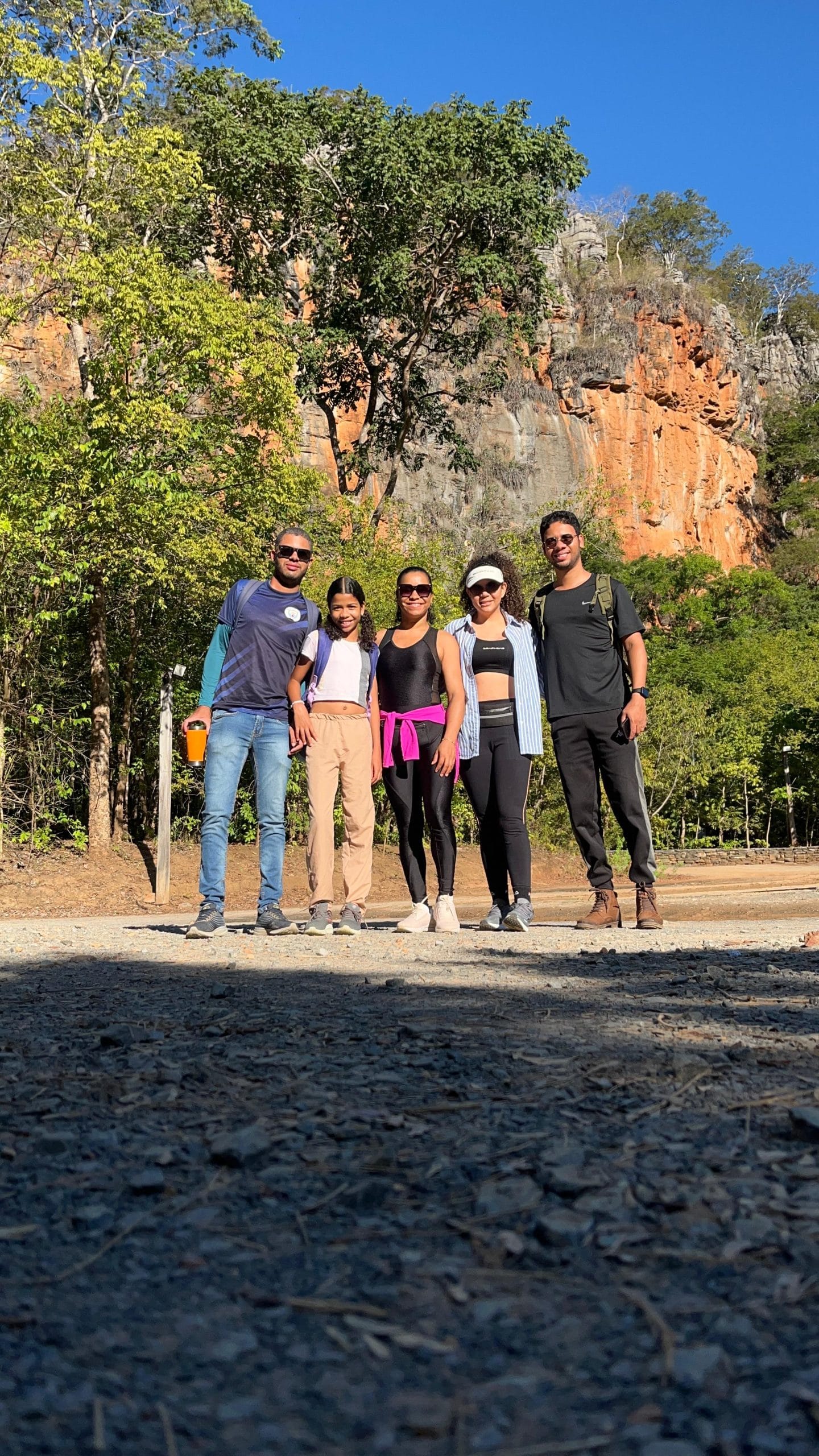
Beyond its natural beauty, the region offers hospitality, tranquility, and a genuine connection to the Minas Gerais cerrado. Whether you’re an adventurer, an archaeology enthusiast, or simply someone in search of new horizons, Peruaçu is sure to surprise you. Grab your camera, your curiosity, and your explorer’s spirit the Peruaçu Caves await you with awe-inspiring landscapes and stories that span centuries.
And finally, don’t forget to share your experience with us when you visit this natural wonder!
